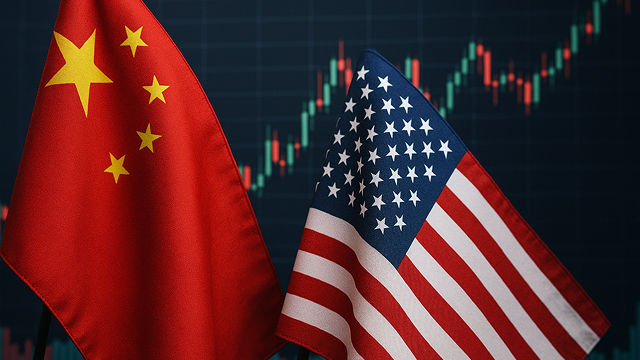
U.S.–China Trade Tension Eases Slightly, Helping Markets Recover
14 octubre 2025
9 views
Global markets showed signs of relief on Friday after statements from U.S. President Donald Trump suggested that the threat of sweeping new tariffs on Chinese imports may have been softened. The shift in rhetoric helped stabilize equities and ease safe-haven demand, marking a tentative turnaround in investor sentiment.
What Changed
President Trump admitted that the previously threatened 100% tariff on Chinese goods was “not sustainable,” and indicated plans to meet Chinese President Xi Jinping at the upcoming APEC summit. This hint of diplomacy came after rising tensions spurred concerns of a full-blown trade war, which had weighed on risk assets for weeks.
Market Reaction
-
U.S. stock futures rebounded, with the S&P 500 and Nasdaq gaining as worries over banking sector stress and trade escalation were temporarily alleviated.
-
Commodities, including crude oil and base metals, regained footing as concerns about a global growth slowdown abated.
-
The U.S. dollar slipped as safe-haven flows receded; currencies like the yuan and commodity-linked FX found support.
Why It Matters
Trade relations between the U.S. and China remain one of the most significant macro risks for global markets. Even hints of de-escalation can spark relief rallies across risk assets. For traders, this shift matters because:
-
Reduced trade risk could brighten the outlook for global GDP growth and corporate earnings.
-
It lowers one major overhang for equities and commodities, potentially allowing markets to refocus on central-bank policy and earnings.
-
But the relief is fragile — underlying tensions like rare-earth export controls, port fees, and supply-chain disruptions remain unresolved.
Outlook
While the tone change is welcome, a full breakthrough isn’t guaranteed. Markets may take this relief as a chance to rally, but new tariff threats or export-control escalations could quickly reverse sentiment. Traders should keep an eye on:
-
Statements from Chinese officials and U.S. trade negotiators for next moves
-
Rare-earth and semiconductor supply-chain flows, given China’s dominance in these areas
-
Global growth indicators that would benefit if tensions fade, such as industrial production and trade volumes




